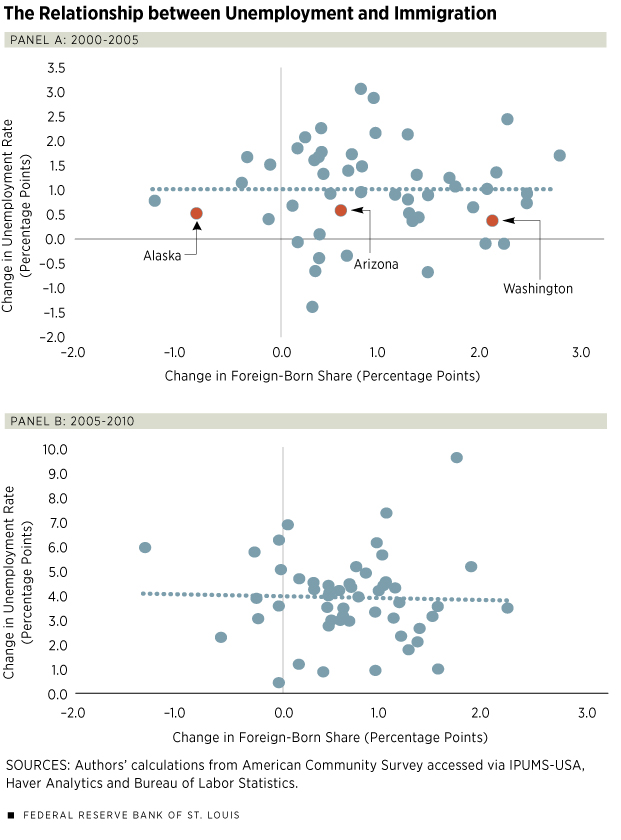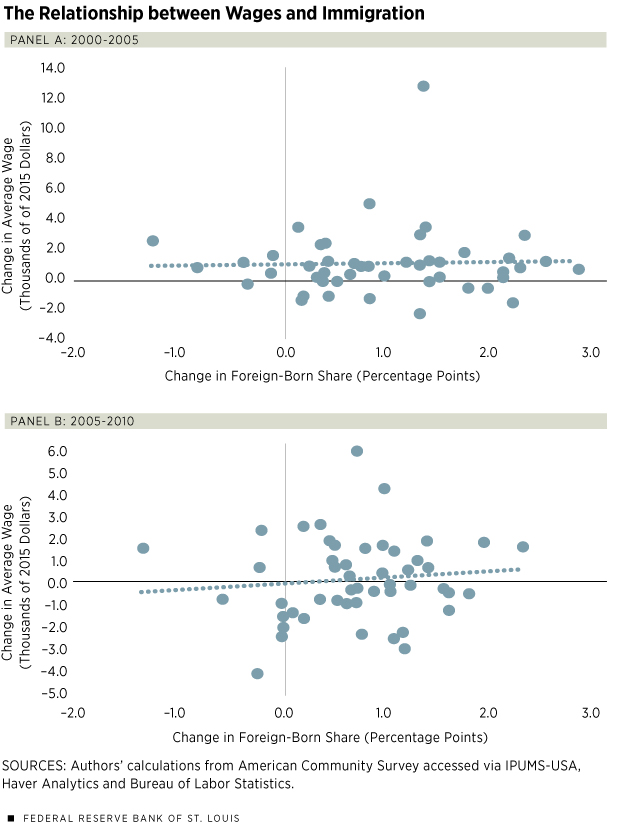Yes, this is another immigration post.
A 2017 article in the St. Louis Fed’s The Regional Economist looks at the impact immigration has on U.S. labor markets. The researchers drew on “state-level data from the U.S. Census Bureau for the years 2000, 2005 and 2010 for wages and immigration figures…For wages, we used inflation-adjusted pretax wages and salary incomes of the employed population between the ages of 18 and 60. Finally, we used the Bureau of Labor Statistics’ seasonally adjusted unemployment rate.”
The data “reveals that the relationship between unemployment and immigration is weak to nonexistent, even during this crisis period.”

Furthermore, it “reveals a weak to nonexistent correlation” between wages and immigration, even during economic crises.

But what about the impact on low-skilled workers? “A study by economist David Card addresses this question,” the authors write. “It discusses the consequences of the Mariel boatlift episode, when about 125,000 Cubans emigrated from Cuba’s Mariel port to Miami between May and September 1980. These immigrants had relatively low skills (i.e., less than the average Cuban worker). Card found no evidence that low-skilled wages and the unemployment rate among low-skilled workers changed in Miami.” This is most likely due to the fact that “immigrants and native workers may not be perfect substitutes. It was suggested in one study that immigrants do not so much compete directly with natives as they create conditions for increased specialization by which natives perform more communication-intensive work and immigrants do manual tasks.”
Just more evidence to consider in this controversial debate.